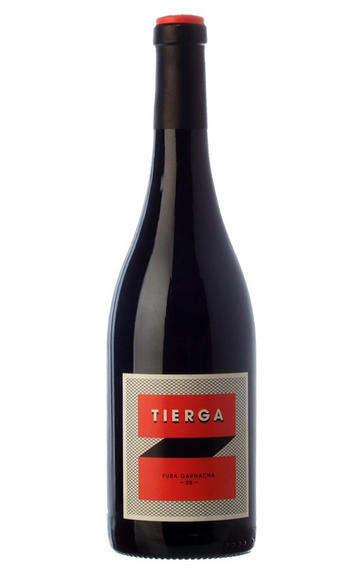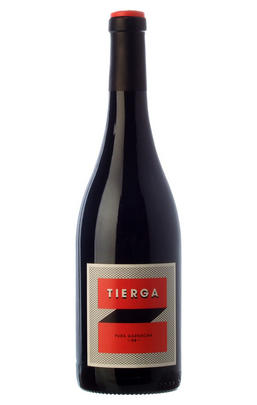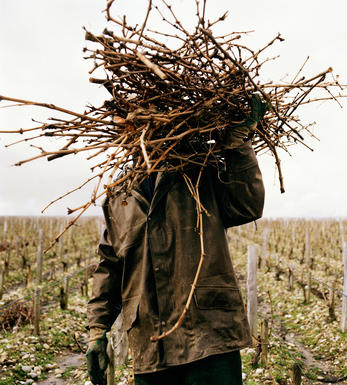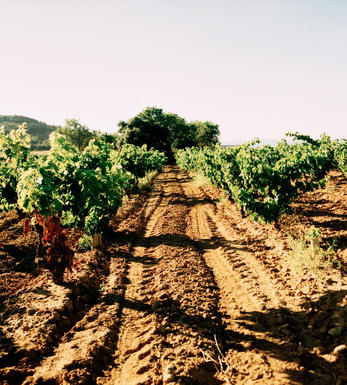
2010 Tierga, Pura Garnacha, La Calandria, Navarra

Critics reviews
Luis Gutirrez - 26/06/2014
About this WINE

La Calandria
Under the baking sun of the Navarra wine region in Spain, La Calandria is crafting some of the finest expressions of pure Garnacha we have seen. Old vines left to grow organically manage the intense heat and produce wines with rich, fruity flavours and a notable quality. The Cientruenos presents delicious notes of dried fruits, damsons and sun-dried herbs, while the Tierga is a powerful, majestic indulgence, with succulent notes of cassis and a long finish.
Tom Stevenson is the UK’s foremost authority on Champagne. But, as his seminal book on Alsace demonstrates, he knows a thing or two about other regions and other countries too as it turns out. He kindly recommended what he described as "the greatest old-vine Garnacha that he had ever tasted" and thus initiated an extraordinary correspondence with the highly individual characters from Bodega La Calandria in Navarra, Castilian argot for ‘the lark’.
Javier Continente is a Fine Arts graduate and also a gifted wine-maker, needless to say and, perhaps a little less obviously, a professional puppeteer. He has recently completed a successful tour of South America. His vineyards are located south of Zaragoza on the frontier bad-lands between Navarra and Aragon; his vines nourished by the River Ebro, several miles south-east of their Rioja heart-land.
The magnificently idiosyncratic sepia daguerreotypes which he sent over demonstrate their full ancient splendour. Some are well over a hundred years old. The stark terrain and somewhat primitive winery belie the depth of flavour coaxed from this extraordinary range, the artistic sensibilities of their somewhat unusual progenitor captured in the aesthetics of the packaging and the originality and enthusiasm of the project. The wines of La Calandria, incidentally, are pretty good. Pretty and good, and more… The lark ascends….
Simon Field MW

Navarra
Navarra has come off the shadows of its mighty neighbour Rioja, to carve its own identity for modern, attractively priced wines from indigenous and international varieties. The region of Navarra extends from the central Pyrenees to the Ebro Valley with its vineyards located in the southern part of the region, between Pamplona and the plains.
Until the 1980s Navarra was best known for its traditional rosé wines made from Garnacha, but it has since gained a reputation for being at the forefront of oenological innovation. This transformation was due in large part to the work of the Navarra Viticulture and Oenological Research Station, which has helped turn the region into a producer of diverse (mostly red) varietals and wine styles, from Tempranillo-rich Gran Reservas and fruity rosados to modern single-varietals from international grapes.
Recommended Producers: Artadi-Artazu, Malumbres

Grenache/Garnacha
Grenache (Noir) is widely grown and comes in a variety of styles. Believed to originate in Spain, it was, in the late 20th century, the most widely planted black grape variety in the world. Today it hovers around seventh in the pecking order. It tends to produce very fruity, rich wines that can range quite widely in their level of tannin.
In many regions – most famously the Southern Rhône, where it complements Syrah and Mourvèdre, among other grapes – it adds backbone and colour to blends, but some of the most notable Châteauneuf du Pape producers (such as Château Rayas) make 100 percent Grenache wines. The grape is a component in many wines of the Languedoc (where you’ll also find its lighter-coloured forms, Grenache Gris and Blanc) and is responsible for much southern French rosé – taking the lead in most Provence styles.
Found all over Spain as Garnacha Tinta (spelt Garnaxa in Catalonia), the grape variety is increasingly detailed on wine labels there. Along with Tempranillo, it forms the majority of the blend for Rioja’s reds and has been adopted widely in Navarra, where it produces lighter styles of red and rosado (rosé). It can also be found operating under a pseudonym, Cannonau, in Sardinia.
Beyond Europe, Grenache is widely planted in California and Australia, largely thanks to its ability to operate in high temperatures and without much water. Particularly in the Barossa Valley, there are some extraordinary dry-farmed bush vines, some of which are centuries old and produce wines of startling intensity.


Buying options
Add to wishlist
Description
Javier’s ambition has been to seek a wine to ‘leave the lips purple’ and he has certainly succeeded here with this amazingly powerful example, an essential statement of low-yield Garnacha, with an alcohol level that is not for the faint-hearted. Old vines have, of course, tempered the worst indulgences of the fierce sun and the ripe damson liqueur de cassis fruit cedes to ripe fruit tannins and a firm finish. Pura, however, is not a misnomer, given the wine’s harmonious structure and whistle-clean finish.
Simon Field MW - Wine Buyer
Javier Continente’s vineyards are located south of Zaragoza on the frontier bad-lands between Navarra and Aragon; his vines nourished by the River Ebro, several miles south-east of their Rioja heart-land. In the sun-baked warmth sun of the Navarra wine region, La Calandria is crafting some of the finest expressions of pure Garnacha we have seen. Old vines left to grow organically manage the intense heat and produce wines with rich, fruity flavours and a notable quality.
wine at a glance
Delivery and quality guarantee